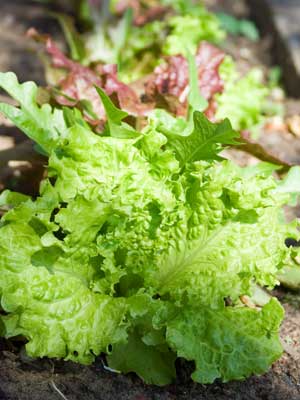
Lettuce may be a popular vegetable and used extensively in both the house kitchen and restaurants. Its popularity continues to grow as people become more health-conscious and appearance for healthy foods to eat. Lettuce are often either an entremets or the most course and doesn’t need even got to be cooked! Lettuce may be a fairly easy-to-grow vegetable and offers many sorts to undertake in your home garden.
What is lettuce, anyway?
Lettuce may be a cool-season fairly hardy vegetable, usually planted by seed within the springtime after the last frost and in later summer for a fall harvest. Lettuce doesn’t tolerate heat and high temperatures. These four sorts of lettuce for you to think about for your home garden (as well as many sorts, or cultivars).
FOUR sorts of LETTUCE
CRISPHEAD LETTUCE
Crisphead sometimes referred to as crisphead lettuce (iceberg lettuce may be a cultivar of crisphead) is perhaps the foremost common sort of lettuce you’ll find in supermarkets. Crisphead is firm, round and has light green colored, crisp leaves. iceberg lettuce doesn’t tolerate heat well and requires an extended growing period making it difficult to grow within the home garden. Crisphead takes 70-80 days to mature.
BUTTERHEAD LETTUCE
Butterhead also referred to as bib lettuce, forms heads like crisphead but has looser, softer heads with leaves that are less compact. The outer leaves are either green-colored or brownish with cream inner leaves. Butterhead matures in about 70 days after sowing.
LEAF LETTUCE
Leaf lettuce doesn’t form a head and its leaves grow loosely. the color of the leaves can vary greatly from red to purple to bronze. this sort of lettuce is one among the simplest and quickest to grow within the home garden. Leaf lettuce matures in about 40-45 days.
ROMAINE LETTUCE
Romaine, also referred to as cos lettuce, grows in an upright habit with darker green outer leaves and lighter inner leaves. The leaves are firmer than other lettuce and have an almost sweet flavor. Romaine lettuce is increasing in popularity and maybe a favorite choice in salads. Romaine takes approximately 70 days to mature.
OPTIMAL GROWING CONDITIONS FOR LETTUCE
Lettuce grows best fully sun (6 hours a day), cooler temperatures, and moist well-drained soil. As a cool-season vegetable, lettuce can tolerate a light-weight frost. In fact, lettuce can lose its taste and form if grown in an excessive amount of heat. Ideal temperatures for growing lettuce are between 45 and 65 degrees. Lettuce is forgiving of soil types but does grow best in fertile, sandy-loam soil. It should be draining and not compact or heavy. Organic matter is often added to enhance soil consistency.
HOW TO PLANT LETTUCE
Butterhead and romaine are often grown either from seed or transplants. In northern states, crisphead must be transplanted from seedlings due to the long season it requires.
Lettuce seeds are very small therefore the bed must be prepared. the world of planting should be cultivated and every one clod and lumps got to be either removed or well integrated into the soil. before adding fertilizer you ought to have a soil test performed. you’ll contact your local extension office for directions. If you’ve got not performed a soil test you’ll apply a general 5-10-10 fertilizer at a rate of 3-4 pounds per 100 square feet. make certain to water well after planting.
You can plant successively throughout spring (about 10-14 days apart) for multiple harvests. Putting organic mulch down will help keep the soil temperature consistent and reduce moisture loss.
SPACING OF LETTUCE SEEDS AND PLANTS
Lettuce seeds are often sown for either single or wide rows. Wide rows are often 12-15 inches across. Seeds should be planted about 1/4th to 1/2 inch thorough. Plant about 10 seeds per foot. The seeds should be watered right after planting.
Leave 18 inches between rows for leaf lettuce and 24 inches for the opposite varieties. Lettuce usually must be thinned to stop overcrowding. Leaf lettuce should be thinned to about 4-5 inches between plants; other varieties are often spaced about 6-8 inches apart.
CARING FOR LETTUCE
Keep lettuce seeds moist and don’t let dry out during the germination period. Weeding should be through with care as lettuce plants have very shallow and delicate root systems. During growth keep the plants frequently and lightly watered for best results.
SUGGESTED VARIETIES OF LETTUCE TO GROW
Crisphead
Mesa 659 (fall), Ithaca
Butterhead
Bibb
Salad Bibb
Summer Bibb
Buttercrunch
Tania
Tom
Thumb (miniature)
Leaf
Salad Bowl
Grand Rapids
Black Seeded Simpson
Slobolt
Oakleaf
Green Ice
Prizehead
Red Sails
Lollo Rosso
Ruby
Red Fire
Romaine
Valmaine
Parris Island Cos
